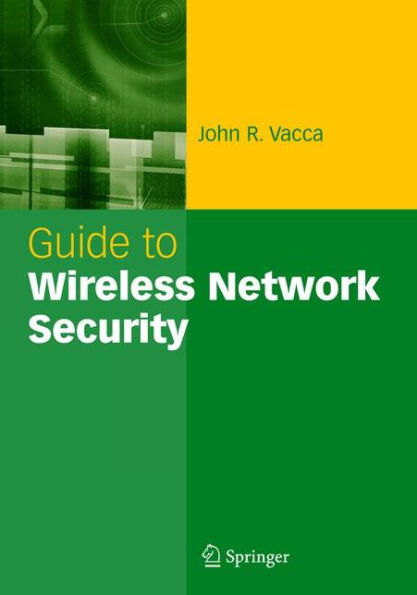Guide to Wireless Network Security
1. INTRODUCTION With the increasing deployment of wireless networks (802. 11 architecture) in enterprise environments, IT enterprises are working to implement security mechanisms that are equivalent to those existing today for wire-based networks. An important aspect of this is the need to provide secure access to the network for valid users. Existing wired network jacks are located inside buildings already secured from unauthorized access through the use of keys, badge access, and so forth. A user must gain physical access to the building in order to plug a client computer into a network jack. In contrast, a wireless access point (AP) may be accessed from off the premises if the signal is detectable (for instance, from a parking lot adjacent to the building). Thus, wireless networks require secure access to the AP and the ability to isolate the AP from the internal private network prior to user authentication into the network domain. Furthermore, as enterprises strive to provide better availability of mission-critical wireless data, they also face the challenge of maintaining that data's security and integrity. While each connection with a client, a supplier or a enterprise partner can improve responsiveness and efficiency, it also increases the vulnerability of enterprise wireless data to attack. In such an environment, wireless network security is becoming more important every day. Also, with the growing reliance on e-commerce, wireless network-based services and the Internet, enterprises are faced with an ever-increasing responsibility to protect their systems from attack.
1101305533
Guide to Wireless Network Security
1. INTRODUCTION With the increasing deployment of wireless networks (802. 11 architecture) in enterprise environments, IT enterprises are working to implement security mechanisms that are equivalent to those existing today for wire-based networks. An important aspect of this is the need to provide secure access to the network for valid users. Existing wired network jacks are located inside buildings already secured from unauthorized access through the use of keys, badge access, and so forth. A user must gain physical access to the building in order to plug a client computer into a network jack. In contrast, a wireless access point (AP) may be accessed from off the premises if the signal is detectable (for instance, from a parking lot adjacent to the building). Thus, wireless networks require secure access to the AP and the ability to isolate the AP from the internal private network prior to user authentication into the network domain. Furthermore, as enterprises strive to provide better availability of mission-critical wireless data, they also face the challenge of maintaining that data's security and integrity. While each connection with a client, a supplier or a enterprise partner can improve responsiveness and efficiency, it also increases the vulnerability of enterprise wireless data to attack. In such an environment, wireless network security is becoming more important every day. Also, with the growing reliance on e-commerce, wireless network-based services and the Internet, enterprises are faced with an ever-increasing responsibility to protect their systems from attack.
169.99
In Stock
5
1

Guide to Wireless Network Security
848
Guide to Wireless Network Security
848Hardcover(2006)
$169.99
169.99
In Stock

Product Details
| ISBN-13: | 9780387954257 |
|---|---|
| Publisher: | Springer US |
| Publication date: | 05/30/2006 |
| Edition description: | 2006 |
| Pages: | 848 |
| Product dimensions: | 7.01(w) x 10.00(h) x 0.07(d) |
From the B&N Reads Blog
